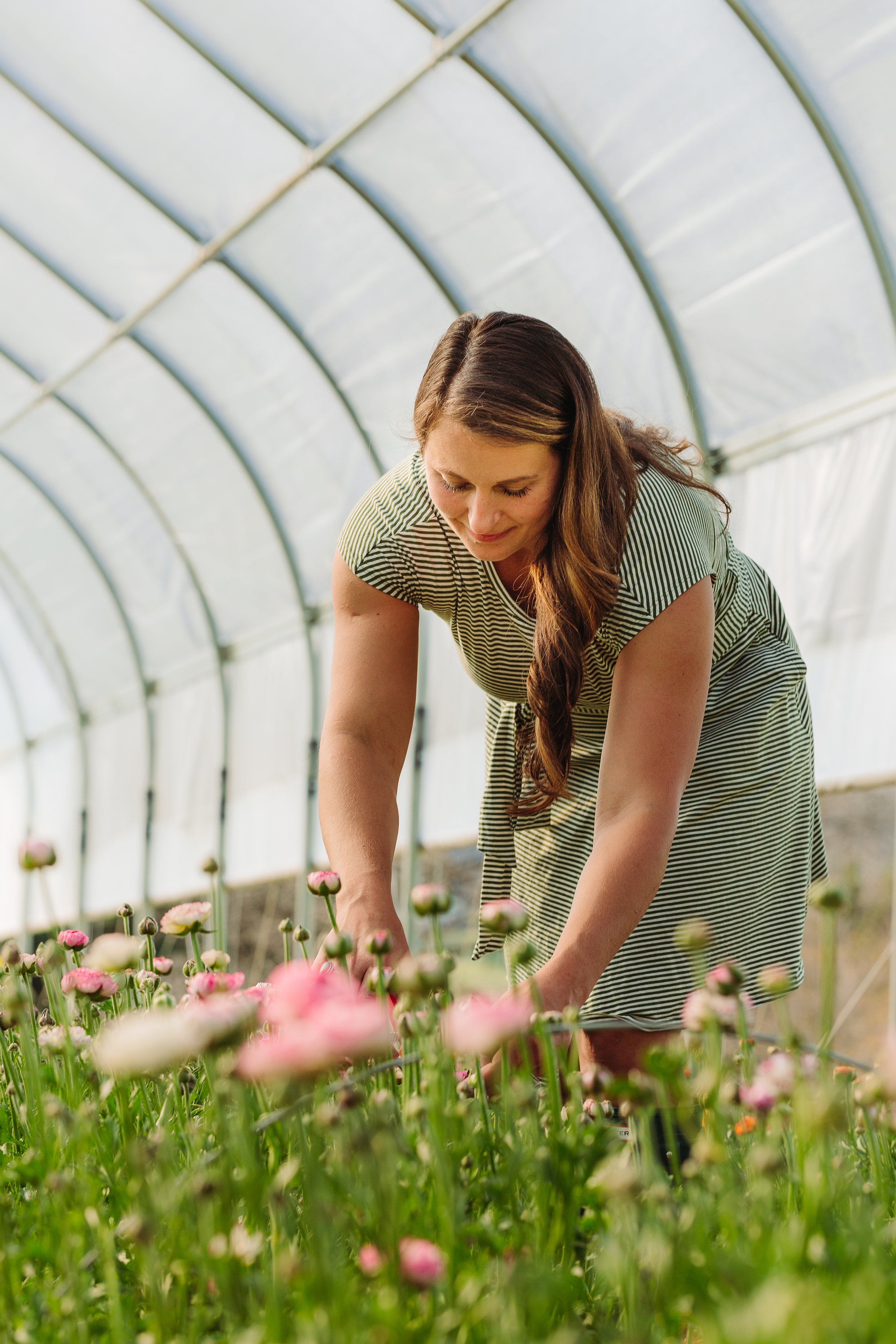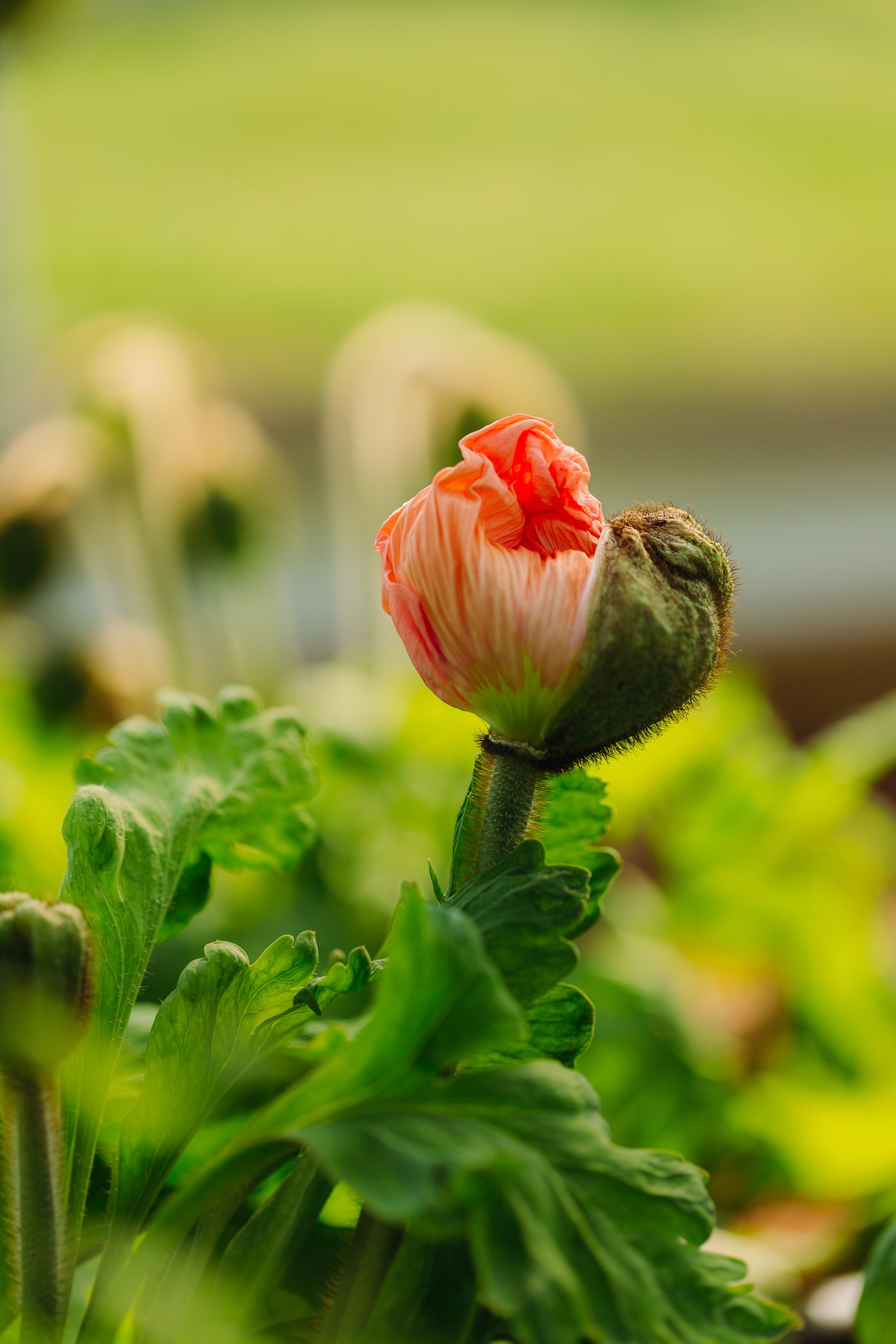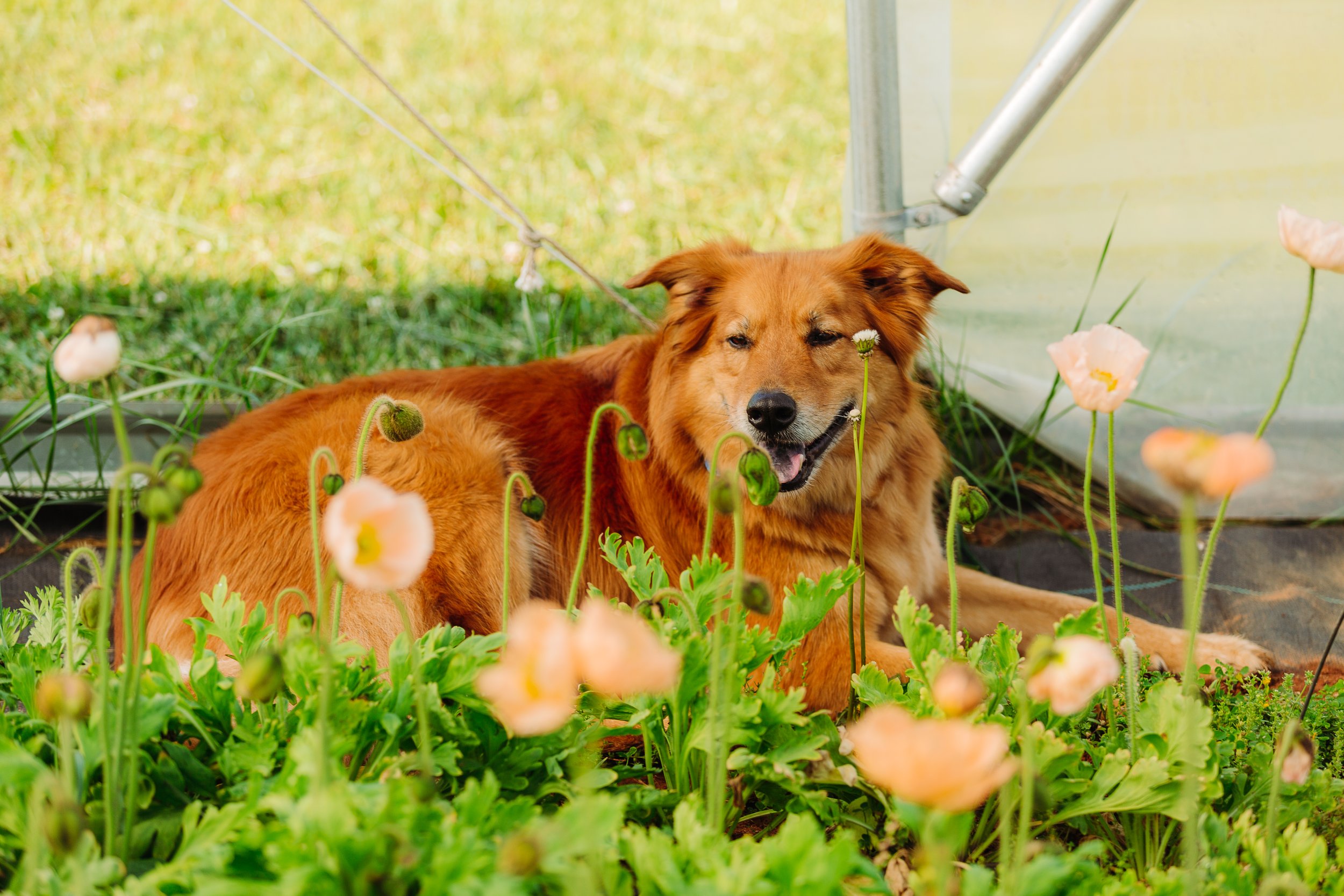Winter Tunnel Temperature Management
/There are so many benefits to using high tunnels, hoop houses or caterpillar tunnels for growing flowers. Tunnels are a great way to add extra protection and season extension to overwintering crops – they protect from wind, rain, snow and add extra warmth. Lately I have been receiving lots of questions about how to best manage tunnels during the winter. For those of us in climates with huge temperature fluctuations (or maybe that applies to everyone everywhere), it is super important to pay attention to the temperature inside your tunnels. During the winter, we primarily grow ranunculus, anemone and Hummingbird poppies inside our unheated high tunnel. I am constantly watching the weather – the high’s, low’s, amount of sunshine, wind speed – to decide when and how much to open the sides of our tunnel. Tunnel management is what farmers stress over in the winter!
I was recently asked a few questions by one of last year’s Flower Farming 101 workshop attendees about how she should be managing her caterpillar tunnels which are planted full of ranunculus. I hope by sharing our exchange below it may help more folks with similar questions.
D’s Questions: Should I be raising the sides every day during the day and then lowering the sides at night? Or should I only raise the sides when the temperature gets to a certain level? I don't want to cut off air flow, but I also don't want to negate all the benefits of using the tunnel. I've never used a low tunnel to grow before, and I have had a hard time finding the specific information I need. What are your thoughts? (Note: her caterpillar tunnels are about 4’ high built over raised beds and the covering is greenhouse plastic)
My answer: I would raise the sides up whenever the sun hits the tunnels and the daytime temperature (outside the tunnel) is above about 40 degrees. It will be much warmer in the tunnel with the sides closed and ranuncs/anemones do not want to grow when it's too hot. Ventilation is very important to help reduce the chance of fungal issues. On cloudy, rainy, cold or windy days, you can leave the sides closed. I would always close them up at night, just in case the wind picks up or temps drop. You'll still have lots of benefits from using the tunnels, mostly in that you can protect the plants from too much rain, wind and extremely cold temps. You may even consider purchasing shade cloth to put on top of the plastic in the early spring. I add shade cloth to our high tunnel in late March/early April since that's when the daytime temps can get into the 70's. The shade will help them stay cooler by 10°F + and thus allow a longer harvest window.
D’s Questions: If the temps drop below freezing, should I also add frost cloth or will the clear plastic be enough?
My answer: When the temps drop below about 26-28°F, I would add a layer of frost cloth under the plastic (still suspend the row cover over the plants so they don't touch leaves). Once the flowers are budded up, I would add row cover if the temps drop below freezing since they're more susceptible to cold damage and it's harder for the plants to bounce back from any damage.
Here are some of my favorite sources for tunnels and season extension supplies:
Tunnel Vision Hoops: for high tunnels; more of an investment; eligible for NRCS EQUIP high tunnel grants; what we currently use.
Farmer’s Friend: for low tunnels and caterpillar tunnels; budget-friendly
Farm Tek: a wide variety of hoop houses and cold frames; what we used our first 4 years of farming.
Note: the following supplies can be found at many local and regional agriculture stores, but Johnny’s Seeds is accessible to everyone from professional growers to home gardeners so that is why I included links to their products. Always shop around locally first!
Wire Supports: used in combination with Agribon row covers. Space the supports about every 6’ down the length of your rows.
Agribon Row Cover: also called frost cloth, used to add extra warmth. Always buy wider cover than your rows. For example, our beds are 4’ wide so we use 6’ wide row cover.
Sandbags: to weigh down the sides of the row covers and keep them from flying away. We will our’s with dirt instead of sand.
Bare Mountain Farm: expert advice on building low or caterpillar tunnels
I hope this helps to shed some light on how we manage our tunnels during the winter months. Drop your questions in the comments and I’ll do my best to answer!
















